Szczecin
The vibrant capital of the Zachodniopomorskie, or West Pomeranian province, is a large port city with a fascinating history. Built where the River Oder flows into the Szczecin Lagoon, it offers a captivating combination of old and new for visitors to discover…
The Paris of the North
The city’s three main squares, connected via a radial pattern of streets, are modelled after those in the beloved French capital. Their layout reflects the position of the pyramids of Giza in relation to the Nile and the Orion constellation in relation to the Milky Way. And that’s just the start of the city’s many attractions…
Many visitors fairly assume that Szczecin lies on the sea – a reasonable expectation for the capital of a province that boasts an incredible 185 kilometres of coastline – but no, it does not. It does, however, lie on the River Oder, a river whose beauty in all fairness can only be described as majestic. Stand on the terraces of the Chrobry Embankment to appreciate it for yourself, or even better set off on a cruise, perhaps visiting the wreck of a 90-metre reinforced concrete German tanker on your way. You may have to look twice to realise what the Ulrich Finsterwalder actually is, but the tanker sank in Lake Dąbie during World War II. This serene, photogenic lake is the fourth-largest inland reservoir in Poland, boasting beaches and a bathing area. Lakes Głębokie, Dziewoklicz and Miedwie, also located within the city, also offer beaches (but no tanker!).
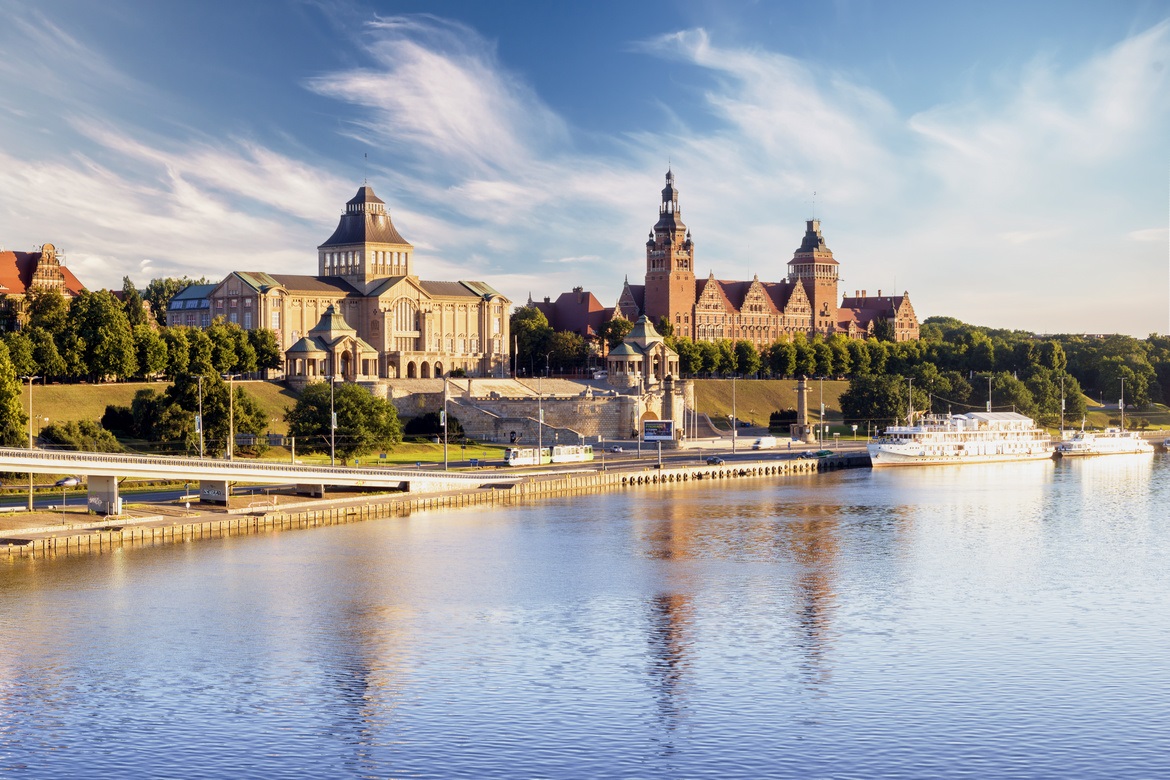
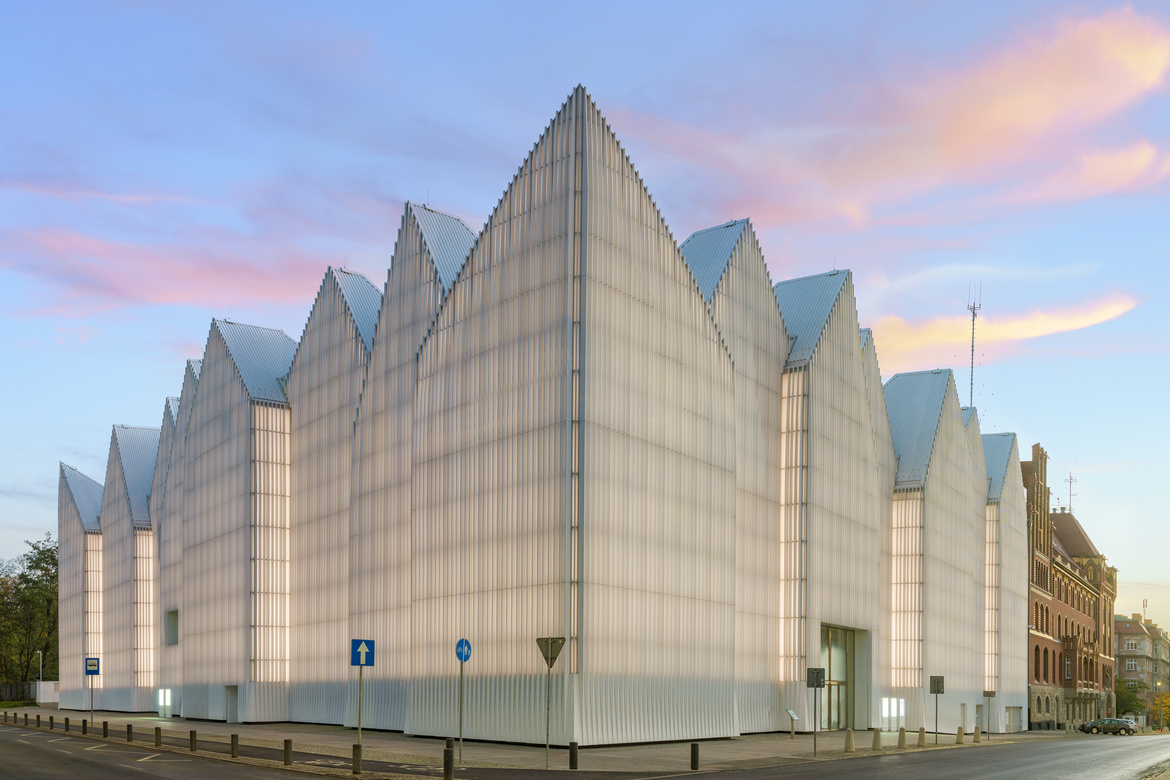
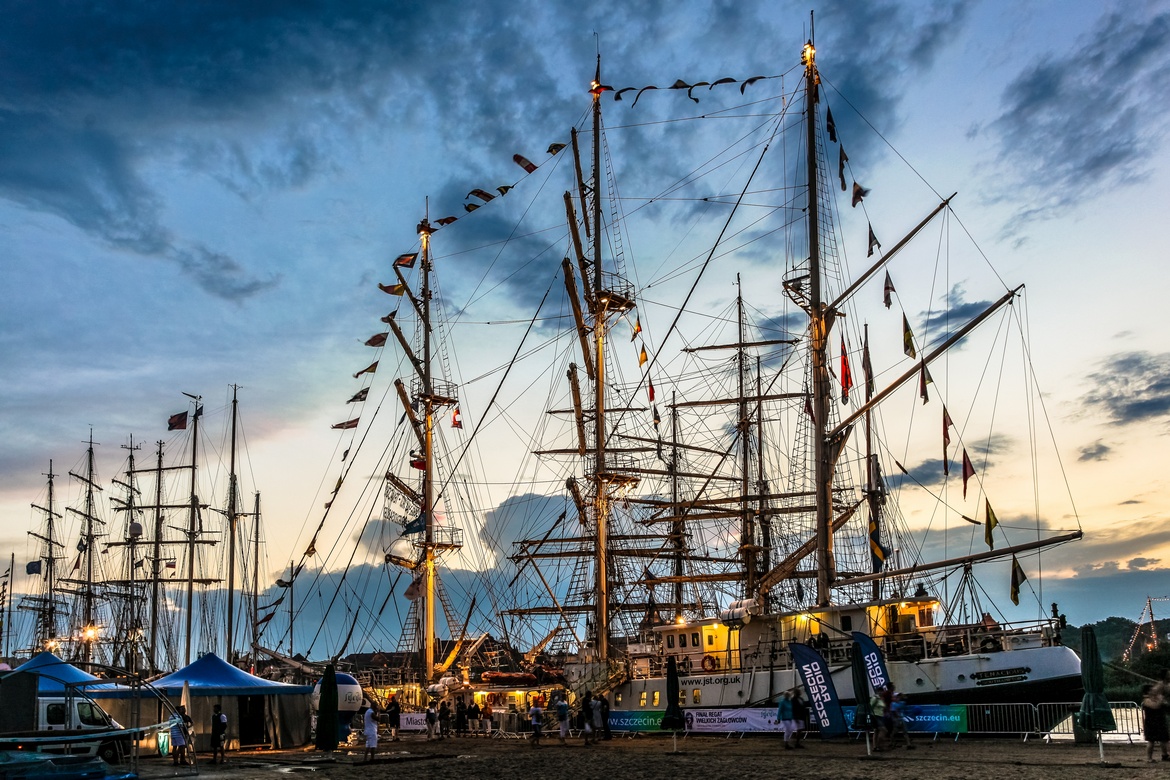
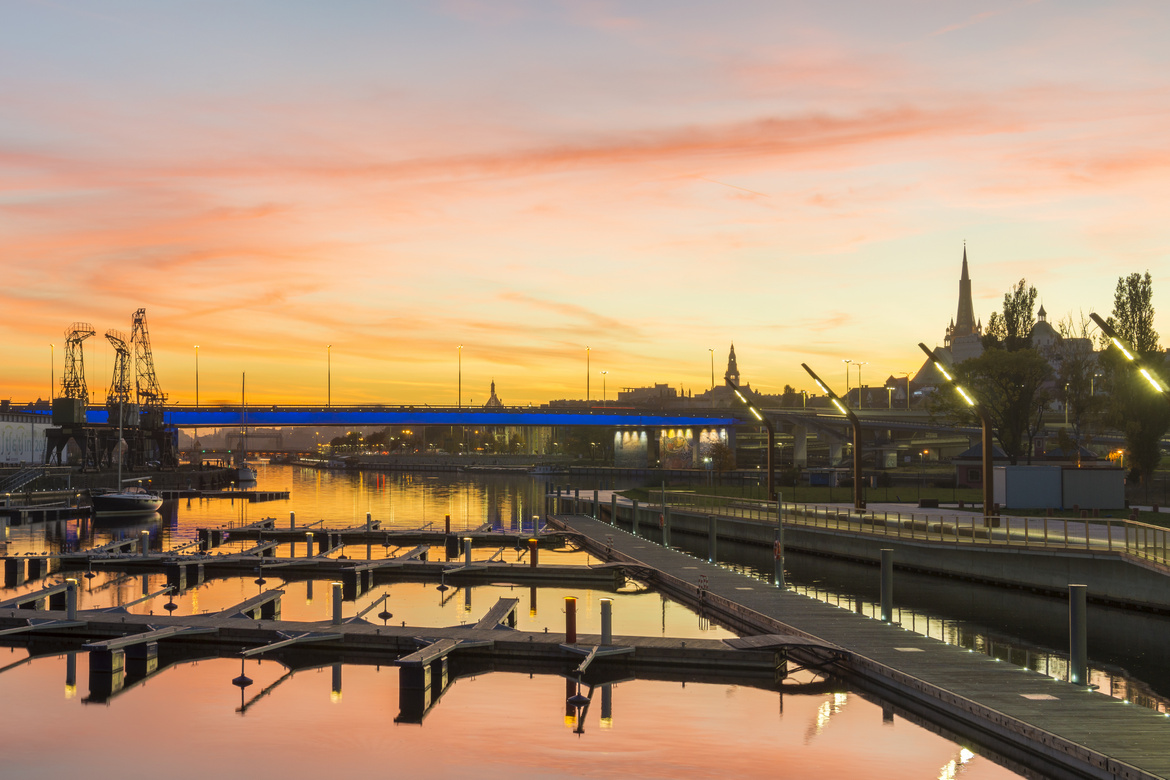
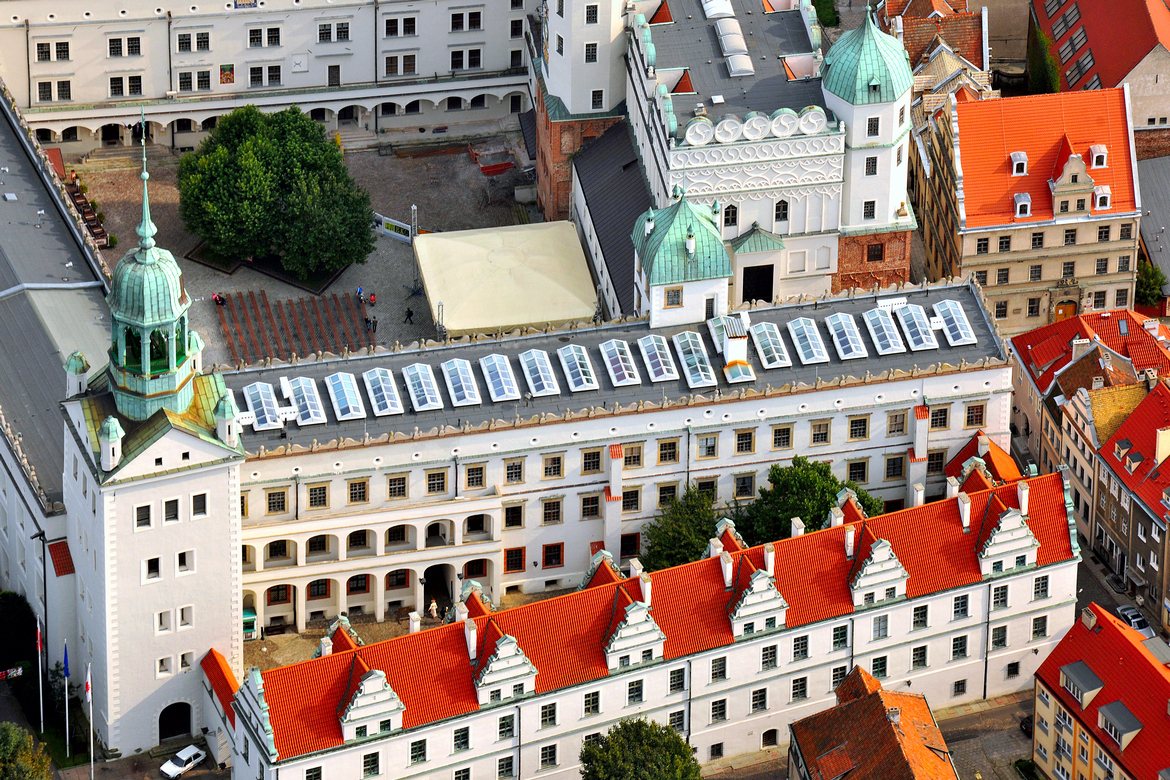
Water, Water, Everywhere…
The romantics among you should head to the Szczecin Venice, which you can reach either by water, using the services of the Municipal Kayak Tours or simply on foot, crossing a little bridge from Kolumba Street onto Jaskółcza Island. Reflected in the Oder, the characterful brick façades of tenements and 19th-Century buildings of the former distillery and yeast factory bear more than a passing resemblance to the iconic Italian city.
The vastly renovated Łasztownia Island, whose name refers to the place where goods are loaded or unloaded in port cities, is now more dynamic than ever and positively bursting with life. Historical cranes on the Old Quay are a constant reminder and poignant symbol of the olden days; illuminated at night, there’s more than just an air of prehistoric creatures about them, which has led to their unofficial title of “craneosaurs” (you can see why, right?). In the distance you can make out the mast of the SS Kapitan K. Maciejewicz, a general cargo carrier that was named after the “captain of captains” of oceanic sailing, Konstanty Matyjewicz-Maciejewicz, before it was eventually scrapped in 1985, having sailed under other names and flags. Pedestrians, runners, cyclists and even anglers are drawn to the attractive, spacious new boulevards, packed with atmospheric cafés, ships moored at the wharf, and the gorgeous red-brick Euroregion’s Culture Centre, which also goes by the less-appealing name of the Old Slaughterhouse (for obvious reasons).
The striking colour of Lake Szmaragdowe, located in Zdroje district, is given away by the translation of its name: The Emerald Lake. Lying within the lush, enchanting Beech Woods Landscape Park in the Bukowe Hills, it was formed during the excavations of an old chalk mine; there are actually still pieces of mining machinery at the bottom. The area around the lake is a veritable sanctuary for many protected animal species, including bats wintering in the nearby bunkers. Breathe in the air, the magic, and the silence. And for goodness sake, do not forget your camera.
Brush Up on Some History
One excellent way to see Szczecin in a nutshell is the City Tourist Route, marked by a host of sites such as: the iceberg-like Mieczysław Karłowicz Philharmonic; the Pomeranian Dukes’ Castle; Solidarity Square – a reminder that Szczecin was the first city to sign the 1980 August Accords (even before Gdańsk); the Breakthroughs Dialogue Centre with an exhibition on the city’s post-war history; St. James’ Church; the Royal Gate; the Port Gate and the birthplaces of two women who went on to become Russian tsarinas: Catherine the Great and Maria Feodorovna.
The mission to “build the regional, national and European identity of Western Pomerania and its residents in the spirit of multicultural, cross-border dialogue and collaboration” is pursued by the National Museum in Szczecin through its many divisions, among them the Museum of Regional Traditions.
Car lover? To find out what the vehicles made in Szczecin looked like and how they moved, the exhibition at the Museum of Technology and Transport is one for you. Spoiler alert: they include pre-war Stoewer bicycles and cars, the unforgettable Junak motorbikes and the prototype of the Smyk passenger car.
A Green Paradise for Leisure and Sports
Often – and very understandably – called the city of greenery, Szczecin boasts over 500 hectares of municipal green areas, including 15 parks with a total area of 142 hectares, 90 green squares with a total area of 55.2 hectares, and cemeteries occupying an incredible 193.87 hectares. And that’s not even including the city’s woodlands! They’re all worth a visit, but if we had to choose a few then Jasne Błonia Square near the Municipal Office and Kasprowicza Park, the largest in the city, are not to be missed. At the edge of the park, you’ll come to the incredible Różanka botanical garden, with 9,000 fragrant roses of 99 varieties as well as several types of trees and a striking brick bird fountain.
Occupying a massive 170 hectares, Szczecin’s Central Cemetery is the largest necropolis in Poland, and is really a remembrance “garden of the deceased”. Gravestones, of which many are the work of great artists, stand amidst a few hundred species of trees, many of them exotic. It really makes quite an impression. The second-largest housing estate in Szczecin, Osiedle Pogodno, may not sound like the kind of place you fall in love with, and yet that’s exactly what it is. The park-like greenery is dominated by former German villas with distinctive turrets.
After so much sightseeing, it’s time to treat your taste buds. Be sure to try the local speciality – pasztecik (a type of deep-fried pasty or pie) at the cult-status Pasztecik bar in Wojska Polskiego Street, the oldest place selling these delicious treats. You can’t miss its huge red letters!
As for the cultural calendar of events, the most interesting include Oder Days, Sea Days, the Tall Ships Races, St. James’ Fair, the Pyromagic International Fireworks Festival, Spoiwa Kultury (Bonds of Culture), Szczecin Jazz, the Szczecin Music Fest and the Kontrapunkt Review of Small Form Theatres.


